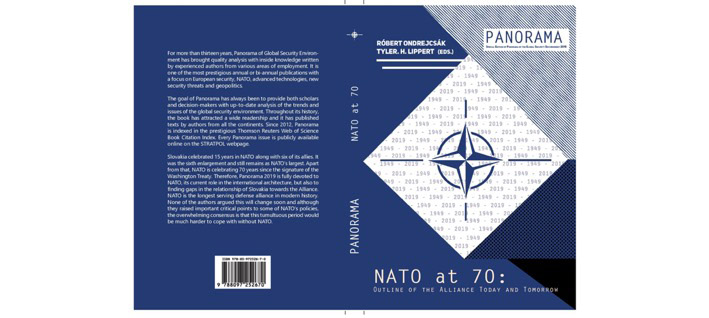Dr. Johann Schmid, Director COI Strategy & Defense, contributed to STRATPOL: NATO at 70: Outline of the Alliance Today and Tomorrow, Special Edition of Panorama of Global Security Environment 2019.
The article focuses on the linkage between hybrid warfare and new technologies and identifies the need to orchestrate the technology revolution. It is connected to Hybrid COE’s Community of Interest Strategy and Defence (COI S&D) project on “Hybrid Warfare Future and Technologies” (HYFUTEC).
Key thesis and arguments advanced:
Technological trends suggest that the portfolio of hybrid hazards will rapidly expand. It is evident that political, civilian and military decision makers need to become more knowledgeable of the disruptive potential of new technological trends, which may offer new options of violence, as well as for the use of force in a hybrid warfare/conflict context.
In the face of these developments, hybrid warfare becomes not only the war of choice for the small and poor. It may also become particularly attractive for larger powers, as they can pursue their political interests with little risk.
Today the nation’s power – militarily as economically – rests on data. Via data and communication networks, computers and automation come together in a new way with remotely connected robotics. In a world of constant connectivity, data is the new oil. And networks are the new oil rigs.
Hybrid warfare happens in the real and in the virtual world. The real-world segment is in principal well observed and understood, while the virtual segment operates stealthy in the invisible world of computers and networks until showing effects in the real world, often to the surprise of an unprepared target.
Systems of systems thinking is key as hybrid actors fuse military and non-military means. We can expect hybrid warriors to develop models of their perceived targets and to use them to make an attack.
NATO and Europe are at a crossroads. Hybrid warfare is threatening member nations and NATO´s and the EU`s neighbourhood. Countering hybrid warfare requires the ability to protect vulnerable interfaces and to operate in their grey areas by adopting a truly comprehensive approach.
The given technological revolution must be orchestrated, for technical and operational reasons, but also with view to the fundamental interests and values represented by NATO and EU member nations. Three dimensions need to be tackled.
1. Conceptually, strategy, concepts and concrete initiatives need to enable to successfully resisting and fighting hybrid aggression, as new
technologies are fundamentally challenging politics and society, economy and production, prosperity and democracy, security and defence.
2. Technologically, the possibilities of the technological revolution need to be exploited, their misuse limited.
3. Organisationally, as the technology revolution unfolds, there is reason for urgency in orchestrating and accelerating innovation in Europe.
Both, hybrid warfare and disruptive technology constitute serious challenges to NATO, the EU and member states. Meeting these calls for a determined, holistic and collaborative approach. Open, democratic societies that lack strategic vigilance are particularly vulnerable to hybrid methods of warfare.
The full article can be downloaded here (pdf).



